

My Grandma decided since her workout was going so well she would continue at least one minute of jump rope a day and now was going to see what would happen to her graph is she played various games of horse shoes. So before starting her workout my grandma graphed out what would happen if she jump roped for one minute and played one game of horse shoes.
One Minute of Jump Rope with One Game of Horse Shoes
Y = 1x2 + 1x + 0
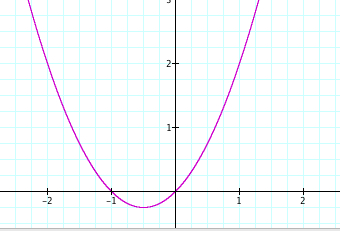 My Grandma noticed immediately a very strange movement of the graph. She could not understand why one change in variable would cause such a change in the graph. She decided to look at the transformation in terms of the vertex of the parabola. My Grandma looked up in her old high school text book that to find the formula for the vertex of a parabola given the quadratic equation. The formula for the x-value of the coordinate where the vertex is:
My Grandma noticed immediately a very strange movement of the graph. She could not understand why one change in variable would cause such a change in the graph. She decided to look at the transformation in terms of the vertex of the parabola. My Grandma looked up in her old high school text book that to find the formula for the vertex of a parabola given the quadratic equation. The formula for the x-value of the coordinate where the vertex is:
![]()
Once we find the x-value we plug it back in to our quadratic equation to find the y-value, this will give us where the vertex is.
The first thing my Grandma had to do first however, was work out through the week and record how many games of horse shoes she played every day, and see how that affected the graphs.
| 1x2 + 2x + 0 | 1x2 + 3x + 0 | 1x2 + 4x + 0 | 1x2 + 5x + 0 | 1x2 + 6x + 0 |
|---|---|---|---|---|
 |
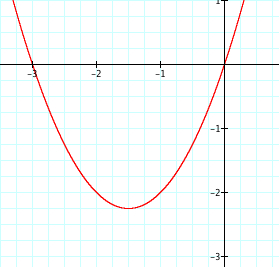 |
 |
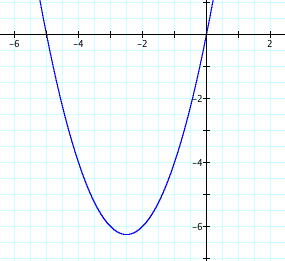 |
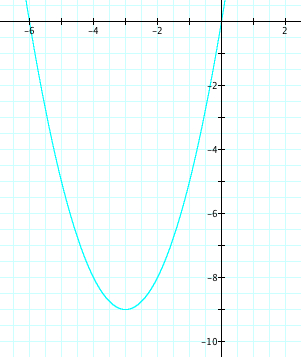 |
With these graphs my Grandma was able to see how the vertex of each parabola moved depending on what b was. These movements brought great curiosity to my Grandma so much so that if it were possible she would play negative games to see what a negative b would be doing to the graph. So she decided for the next week of graphs that she would count every game as a negative to see how the graph would change.
| 1x2 - 2x + 0 | 1x2 - 3x + 0 | 1x2 - 4x + 0 | 1x2 - 5x + 0 | 1x2 - 6x + 0 |
|---|---|---|---|---|
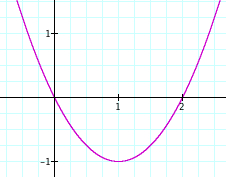 |
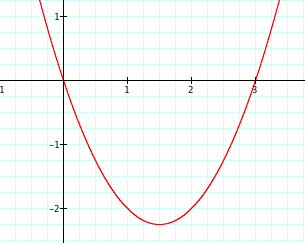 |
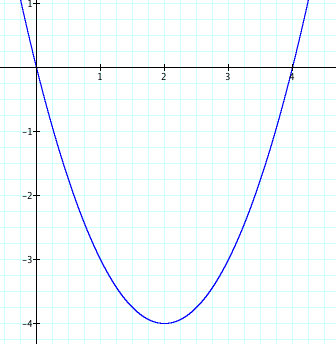 |
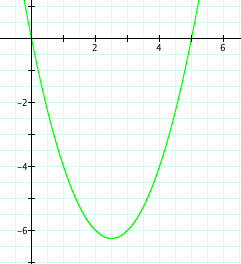 |
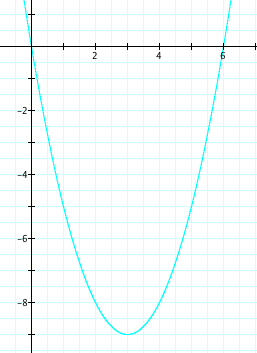 |
It seemed to my Grandma that the vertex to each of these parabolas were moving in the same fashion as their positive counter parts only difference was one was to right the other to the left. This made my Grandma come up with the conjecture that the locus of the vertex of these parabolas would be another parabola. She asked me to create another movie of the movement of the graphs when -10 < b < 10.
Using the steps for finding the vertex of a parabola my Grandmother mentioned before she went straight to work to find the path of the vertex of her parabola. She began this process by creating a table:
| a | b | -b/2a | ax2 + bx |
|---|---|---|---|
| 1 | -4 | 2 | -4 |
| 1 | -3 | 1.5 | -2.25 |
| 1 | -2 | 1 | -1 |
| 1 | -1 | 0.5 | -0.25 |
| 1 | 0 | 0 | 0 |
| 1 | 1 | -0.5 | -0.25 |
| 1 | 2 | -1 | -1 |
| 1 | 3 | -1.5 | -2.25 |
| 1 | 4 | -2 | -4 |
At first my Grandma was satisfied with this until she realized that the coefficient a was constant. What if, she wondered, a was not constant but instead we try to see what happens if a and b are unknowns. Can we find a relationship between a and b?
So we know that x = -b/2a, so we plug that in to the quadratic ax2 + bx + 0. Once we plug in -b/2a for x we get a(-b/2a)2 + b(-b/2a).
Grandma and I took some time to work out the math and we got the following:
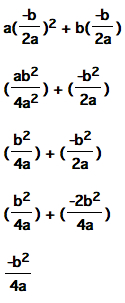
So we have that the coordinate of the vertex of any quadrilateral is (-b/2a, -b2/4a). Again my Grandmother was satisfied but I pointed out to her a very important point, that she had not started jogging so their is one constant we had not considered. She was not pleased with me but at least I got her to start her last work out.